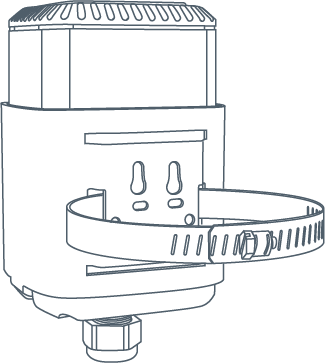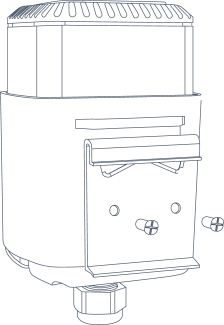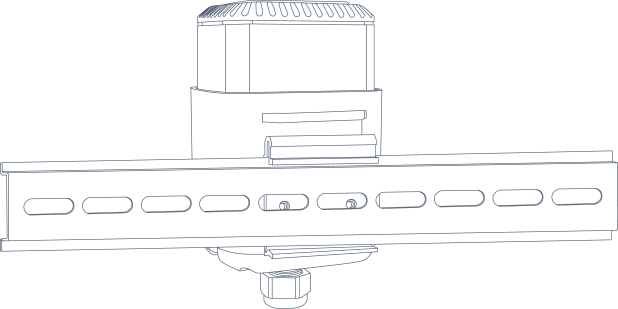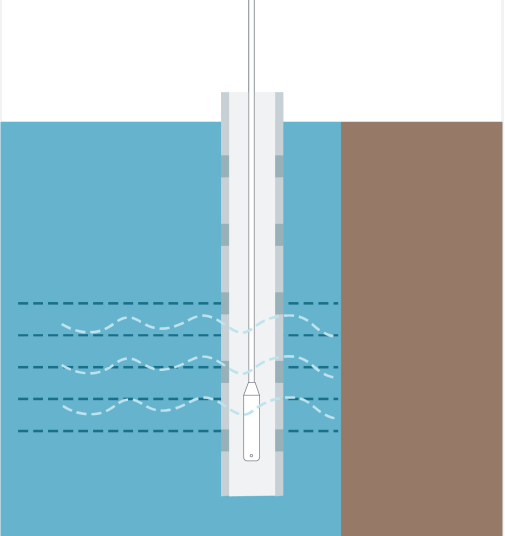Installation
EM500 Transceiver Installation
The transceiver supports wall, pole or DIN rail mounting.
- Installation Location
-
- Keep the transceiver away from metal objects and obstacles for better signal.
- Do not put the transceiver in a closed environment, as this will affect the accurate measurement.
- Wall Mounting
-
- Drill two holes in the wall according to the mounting bracket, then secure the wall plugs into the wall.
- Fix the mounting bracket to the wall via screws.
- Place the device onto the mounting bracket, then secure it to the bracket with two fixing screws.

- Pole Mounting
-
Straighten out the hose clamp and slide it through the rectangular holes in the mounting bracket, and wrap the hose clamp around the pole. After that, use a screwdriver to tighten the locking mechanism by turning it clockwise.


- DIN Rail Mounting
-
Use 2 pcs of M3 × 6 flat head Phillips screws to fix the mount clip to the bracket, and then hang the device on the DIN rail. The width of the DIN rail is 3.5 cm.


SWL Sensor Installation
- Installation Location
-
- The liquid pressure does not exceed the sensor's measuring range.
- The measuring liquid does not block the holes in the sensor.
- Keep away from the liquid inlet and outlet.
- If there is sediment at the bottom and it is very thick, place the sensor above the sediment.
- To prevent the separation of the sensor and the transceiver due to water shock or gravity, it is necessary to wrap the cable around a pole or fix it to a bracket.
- When the sensor is placed outdoors, please check your lightning protection.
- Install in the Water
-
Lower the sensor via cable into the liquid until it is close to the bottom of the tanks or ponds. The sensor should be installed vertically down.

If the sensor is to be used in a well or other locations with turbulence or other disturbances, it is advisable to install a pipe to protect the sensor. The pipe can't be placed bend, and several holes should be drilled at different heights in the pipe in order to let water flow in and remove hydrodynamic pressure.